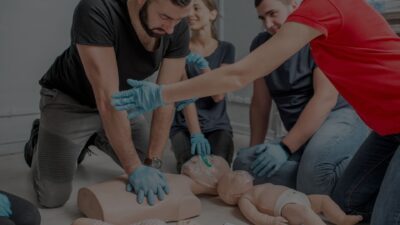Cardiopulmonary resuscitation (CPR) is a critical life-saving skill that can make the difference between life and death in emergency situations. Whether you are a healthcare professional, a concerned parent or just someone who wants to be prepared to help in a crisis, hands-on CPR classes are an invaluable resource. These classes offer participants the opportunity to learn and practice the essential techniques needed to perform CPR effectively, empowering them to save lives efficiently. The fundamental principle of CPR is to provide chest compressions and rescue breaths to maintain blood flow and oxygenation to vital organs when someone’s heart stops beating or they stop breathing. While the concept is simple, the execution can be challenging, especially in the high-stress environment of an emergency. Hands-on CPR classes bridge the gap between theory and real-life application, ensuring that participants are well-prepared to respond confidently when faced with a cardiac arrest or choking incident.
 One of the key benefits of hands-on CPR classes is the interactive and experiential learning they offer. Instructors provide participants with manikins to practice chest compressions and rescue breaths, allowing them to develop muscle memory and refine their technique. This hands-on approach enables individuals to gain a deep understanding of the appropriate force and rhythm required for effective CPR, as well as the correct placement of hands and mouth-to-mouth ventilation. Furthermore, these classes often include automated external defibrillator (AED) training, which is crucial for restoring a normal heart rhythm in cases of sudden cardiac arrest. AEDs are becoming increasingly common in public spaces and knowing how to use them correctly can be a game-changer in emergency situations. Hands-on CPR classes typically teach participants how to locate and operate AEDs, making them well-rounded first responders. Another vital aspect of hands-on CPR classes is the emphasis on teamwork and communication. In real-life emergencies, it is often necessary for multiple individuals to work together to provide effective CPR and coordinate the use of AEDs.
One of the key benefits of hands-on CPR classes is the interactive and experiential learning they offer. Instructors provide participants with manikins to practice chest compressions and rescue breaths, allowing them to develop muscle memory and refine their technique. This hands-on approach enables individuals to gain a deep understanding of the appropriate force and rhythm required for effective CPR, as well as the correct placement of hands and mouth-to-mouth ventilation. Furthermore, these classes often include automated external defibrillator (AED) training, which is crucial for restoring a normal heart rhythm in cases of sudden cardiac arrest. AEDs are becoming increasingly common in public spaces and knowing how to use them correctly can be a game-changer in emergency situations. Hands-on CPR classes typically teach participants how to locate and operate AEDs, making them well-rounded first responders. Another vital aspect of hands-on CPR classes is the emphasis on teamwork and communication. In real-life emergencies, it is often necessary for multiple individuals to work together to provide effective CPR and coordinate the use of AEDs.
Beyond the technical skills, hands-on CPR classes also cover important legal and ethical considerations. Participants learn about the Good Samaritan laws that protect individuals who provide assistance in good faith during emergencies. This knowledge helps alleviate concerns about potential liability and ensures that people are more willing to step forward and help when needed click over here. In summary, hands-on CPR classes are a powerful tool for empowering individuals to save lives efficiently. They offer a practical and immersive learning experience that equips participants with the skills and confidence needed to respond effectively in emergency situations. By mastering the art of CPR, understanding AED usage and developing teamwork and communication skills, participants become invaluable assets in their communities, ready to make a life-saving difference when it matters most. Investing in hands-on CPR training is not just a personal decision; it is a commitment to the well-being of others and the greater good.